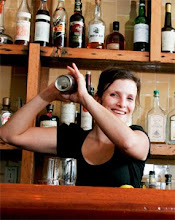
I read cookbooks like novels. Cover to cover. You know how a lot of dudes have stacks of books in their bathrooms? My stacks are cookbooks. (And I like to take baths.)
Being the diligent bar geek that I am, I love old bar books. Most of us relish finding obscure recipes from out-of-print books that are interesting and delicious, and serving them along with their back stories. When Plymouth released their Sloe gin, Dominic Venegas started serving the San Franciscan at Bacar. It’s a cocktail listed in Trader Vic’s Bartender’s Guide from 1947. Delicious. (And beautiful. Dom’s got the sexiest collection of bar tools of anyone I’ve seen. Watching him work is an absolute pleasure.)
Once I started making cocktail ingredients in earnest, I scoured my old bar books for recipes. But aside from a few notable exceptions (Christian Schultz, the “other” author of Jerry Thomas’ How to Mix Drinks, of course), there isn’t much by way of ingredient recipes beyond fruit and liquor infusions and the like. But then I found The Royal English and Foreign Confectioner: A Practical Treatise On The Art Of Confectionary In All Its Branches. Turns out it was drawn upon heavily for a book called The Art of Confectionary, which I had been looking for but was one of those rare, expensive auction types. But Kessinger Publishing has started reprinting vintage books under its Legacy Reprint series, and now I have a whole chapter on syrups! Including capillaire!

Although, I have come across several recipes for capillaire that omit the fern altogether, so maybe it doesn’t contribute much by way of flavor. You know I’ve got to try the original though!

